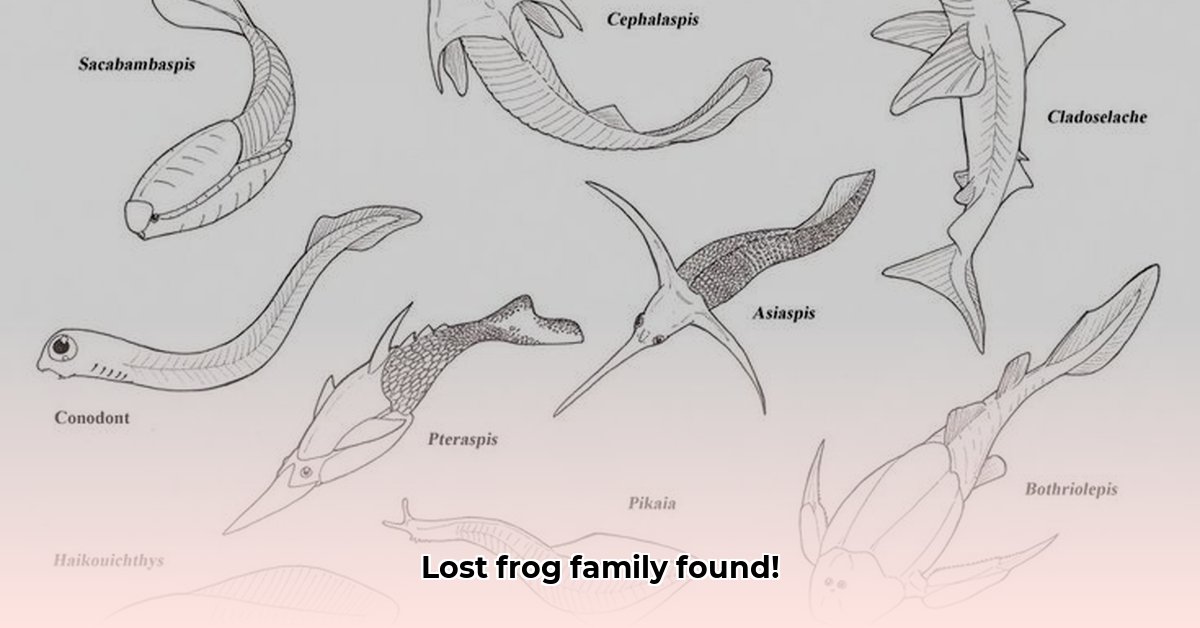A whisper from the distant past, a living relic—Doyle’s Mist Frog (Caligophryne doylei) isn’t just a new species; it’s a new family of frogs, the Caligophrynidae, discovered on the misty heights of a remote Venezuelan tepui. This groundbreaking discovery, published in Molecular Phylogenetics and Evolution, reveals the evolutionary secrets hidden within these isolated “sky islands” and underscores the urgent need for their protection.
Doyle’s Mist Frog: A Tepui Treasure
High on the Neblina Massif, where clouds swirl around ancient sandstone formations, a team of researchers stumbled upon a treasure in 2017: 22 specimens of a frog never seen before. Caligophryne doylei, a medium-sized, robust frog with striking sapphire-blue eyes, immediately captivated the scientists. Its bumpy, warty skin, ranging in color from dirt brown to reddish-brown with black markings, provides perfect camouflage in its mossy, high-altitude home. One individual was even observed guarding a cluster of eggs, suggesting parental care—a behavior that adds another layer of intrigue to this remarkable amphibian.
| Feature | Description |
|---|---|
| Scientific Name | Caligophryne doylei |
| Common Names | Doyle’s Mist Frog, Neblina Frog, Neblina Mist Frog |
| Family | Caligophrynidae |
| Size | 19.7–29.6 mm (about ¾ to 1 ¼ inches) |
| Color | Brown to reddish-brown with black blotches |
| Eyes | Bright Blue |
| Habitat | High-elevation grasslands on the Neblina Massif (a tepui), bordering Venezuela and Brazil |
| Conservation Status | Likely Critically Endangered |
A 3D model of C. doylei is available on MorphoSource, allowing a detailed exploration of its unique morphology.
A Lost World Lineage
The name Caligophryne doylei tells a story. “Caligo,” meaning mist, reflects the fog-shrouded tepuis it inhabits, while “phryne” signifies its toad-like appearance. “Doylei” honors Sir Arthur Conan Doyle, author of The Lost World, whose fictional tale of prehistoric creatures on a remote plateau eerily foreshadows this real-life discovery.
Phylogenetic analysis reveals that Caligophrynidae is a sister group to Brachycephalidae, a frog family found in the distant Atlantic Forest of South America. This suggests an ancient divergence, likely during the early Eocene, with the rising tepuis isolating populations and driving unique evolutionary pathways. This discovery isn’t just about a new frog; it’s about understanding the complex biogeographic history of South America and the role of geological events in shaping the distribution of life.
Tepuis: Islands in the Sky
The discovery of C. doylei underscores the importance of tepuis as biodiversity hotspots. These isolated tabletop mountains act as “sky islands,” each harboring unique species that have evolved in isolation for millions of years. The steep cliffs and isolated habitats create barriers to dispersal, fostering evolutionary divergence. The Pantepui region, encompassing numerous tepuis, serves as a living museum of ancient life, prompting the question: what other undiscovered wonders remain hidden within these mists?
A Precarious Future
While C. doylei‘s discovery is a cause for celebration, it also highlights the vulnerability of these unique ecosystems. Climate change, with its shifting temperatures and rainfall patterns, poses a significant threat. The highly specialized C. doylei, adapted to a specific set of conditions, is particularly susceptible. Additionally, chytridiomycosis, a devastating fungal disease affecting amphibians globally, adds another layer of concern. Ongoing research is crucial to fully understanding the ecology and conservation needs of C. doylei, as well as other tepui inhabitants like the Stefania frogs (sometimes mistakenly referred to as “Doyle’s Mist Frogs”), which face similar threats.
A Call to Action
The fate of C. doylei rests on our collective action. Protecting these fragile tepui ecosystems requires a multi-pronged approach: tackling climate change, supporting research, and implementing effective habitat conservation strategies. The future of these “Lost World” amphibians, and the extraordinary biodiversity they represent, depends on our commitment to conservation. By raising awareness and supporting organizations dedicated to protecting these unique environments, we can help ensure that C. doylei and its fellow tepui inhabitants continue to thrive for generations to come.
- Stunning Wind Turbine Images for Your Next Project - November 5, 2025
- Wind Turbine Generator Kit For Home: Is One Right For You? - November 2, 2025
- Wind Turbine Fire: Questions About Safety Spark Debate - October 31, 2025
















